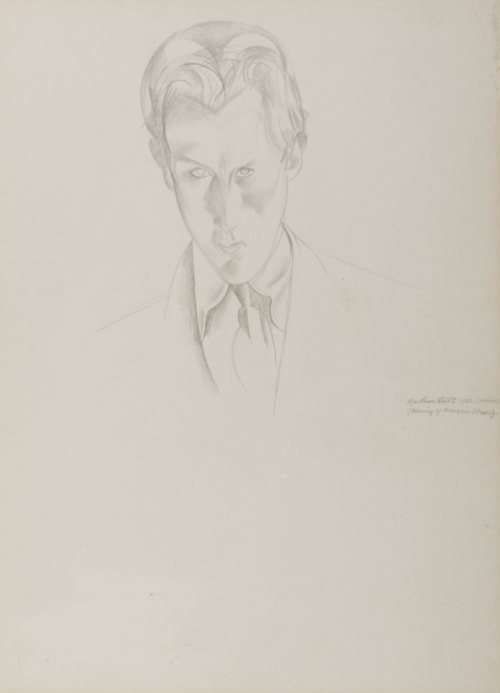
Wyndham LEWIS
Amherst, Nova Scotia 1882 - London 1957
Biography
One of the most significant figures of the avant-garde in Britain in the first half of the 20th century, Percy Wyndham Lewis was unusual among his contemporaries in that he was highly regarded as both a writer and an artist. As he noted in one autobiographical account, ‘I am a novelist, painter, sculptor, philosopher, draughtsman, critic, politician, journalist, essayist, pamphleteer, all rolled into one, like one of those portmanteau-men of the Italian Renaissance.’ A student at the Slade School of Art in London between 1898 and 1901, Lewis spent the next seven years in Europe, mainly in Paris but also studying in Madrid, Haarlem and Munich. Returning to England in 1908, he exhibited from 1911 onwards with the artists of the Camden Town Group and at the Allied Artists’ Association, and was also included in Roger Fry’s Second Post-Impressionist Exhibition at the Grafton Galleries in 1912. Lewis joined Fry’s Omega Workshops in 1913, but by the following year had left to establish the Rebel Art Centre and the magazine Blast, which first appeared in June 1914 and became the manifesto of the short-lived movement known as Vorticism. Lewis was one of the leaders of the Vorticist movement – a group which also included the much younger artists Edward Wadsworth and William Roberts - and was the author of most of the theoretical writings associated with the group. While Vorticism flourished for only a brief period, Lewis continued to work as an artist during and after his military service in the First World War.
Around a thousand drawings and a hundred paintings by Lewis are known. Immensely gifted as both artist and writer, for most of his career he worked as both concurrently, although by the early 1920s it was his writing that began to take up much of his creative energy. As he recalled in later years, ‘From 1924 onwards writing became so much of a major interest that that I have tended to work at my painting or drawing in prolonged bursts, rather than fit them into the intervals of the planning or writing of books. Writing and picture-making are not activities, I have found, which mix very well, unless one becomes the servant of the other as was the case with Blake, or with Rossetti.’ Nevertheless, he produced a significant group of paintings and drawings throughout the 1930s, much of which was shown in one-man exhibitions at various galleries in London. Lewis spent the years of the Second World War in America and Canada, but within a few years of his return to London in 1945 had begun to lose his sight and largely stopped painting, becoming completely blind by 1951.
Wyndham Lewis’s output as a draughtsman was of considerable importance in his oeuvre. Apart from publishing three separate portfolios of his drawings - in 1913, 1919 and 1932 - Lewis frequently used his drawings to illustrate the numerous books, pamphlets and articles he produced. He included significant numbers of drawings in his gallery exhibitions, and in his submissions to such group shows as Roger Fry’s Second Post-Impressionist exhibition of 1912 and the first Vorticist group exhibition in 1915. Furthermore, as one recent scholar has noted, at times ‘drawing functioned, in a sense, as painting for Lewis...The drawings stand as substitutes for paintings when means, materials or the creative will was not there, or at times when Lewis was so taken up with his written work, as in much of the 1920s and ‘30s, that more significant production would have been unfeasible.’




